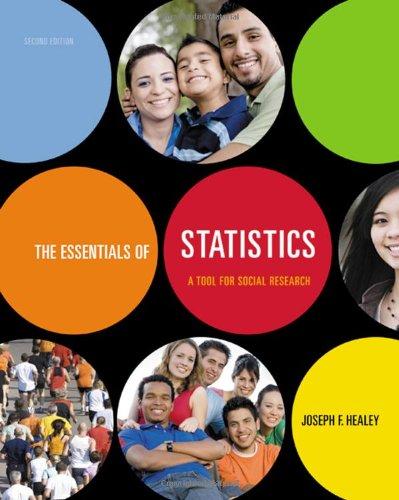and see Section 15.2.) b. Compute the partial correlation coeffi cient for the relationship between turnout (Y
Question:
and see Section 15.2.)
b. Compute the partial correlation coeffi cient for the relationship between turnout (Y ) and negative advertising (X ) while controlling for the effect of unemployment (Z ). What effect does this have on the bivariate relationship?
Is the relationship between turnout and negative advertising direct? (HINT: Use Formula 15.1 and see Section 15.2. You will need this partial correlation to compute the multiple correlation coeffi cient.)
c. Find the unstandardized multiple regression equation with unemployment (X1 ) and negative ads (X2 ) as the independent variables.
What turnout would be expected in a city in which the unemployment rate was 10%
and 75% of the campaign ads were negative? (HINT: Use Formulas 15.4 and 15.5 to compute the partial slopes and then use Formula 15.6 to fi nd
a, the Y intercept. The regression line is stated in Formula 15.3.
Substitute 10 for X1 and 75 for X2 to compute predicted Y.)
d. Compute beta-weights for each independent variable. Which has the stronger impact on turnout? (HINT: Use Formulas 15.7 and 15.8 to calculate the beta-weights.)
e. Compute the coeffi cient of multiple determination (R 2
). How much of the variance in voter turnout is explained by the two independent variables combined? (HINT: Use Formula 15.11. You calculated the partial correlation coeffi cient in part b of this problem.)
f. Write a paragraph summarizing your conclusions about the relationships among these three variables.
Step by Step Answer:

The Essentials Of Statistics A Tool For Social Research
ISBN: 9780495601432
2nd Edition
Authors: Joseph F. Healey






